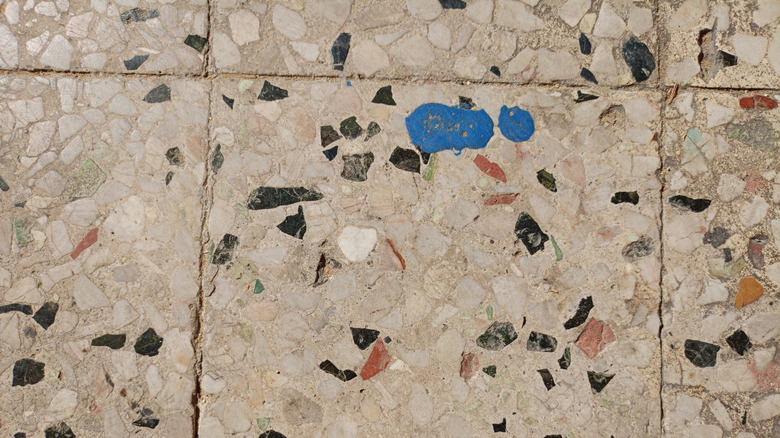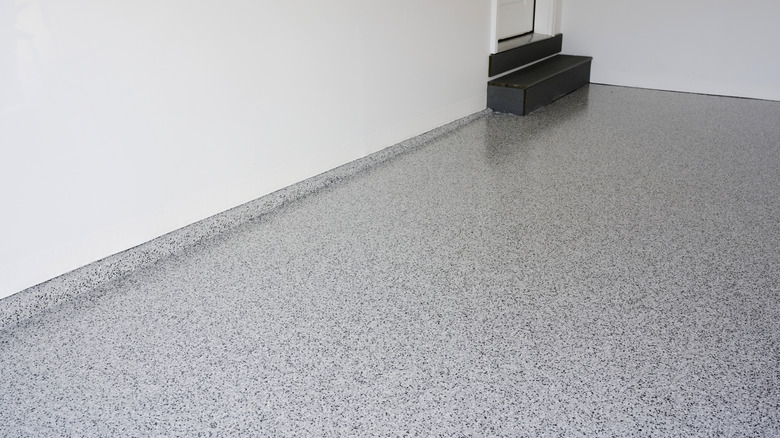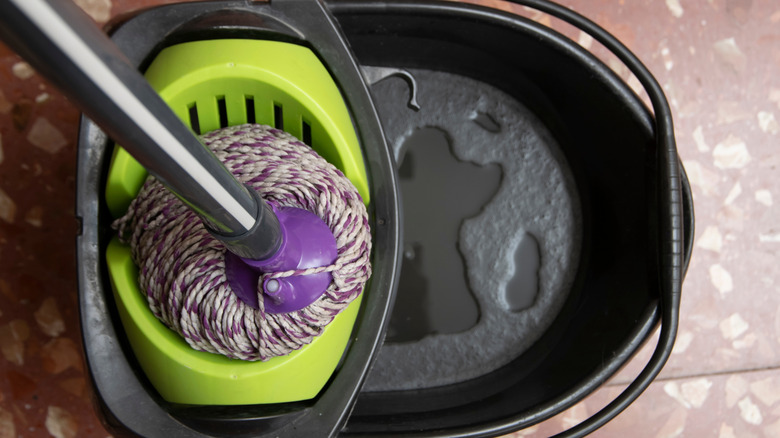How To Restore Outdated Terrazzo Tile Floors For A Refreshed Look
We may receive a commission on purchases made from links.
There's no denying the many advantages of installing terrazzo tile floors in your home. They're next-level durable, super versatile, and are as low maintenance as flooring gets. That doesn't mean they won't get a little dull and dingy after a while, though. Dirt will eventually build up. Signs of wear and tear will inevitably appear. In such cases, your floors may need more than just mopping to restore their shine. We tapped Irakli Khizanishvili, CEO and Owner of Proslit Tile & Stone, for expert advice. He graciously walked us through how to bring a terrazzo tile floor back to life, explaining the process that "involves a combination of mechanical grinding, polishing, and sealing."
It may sound like a lot of work, but the end result should last long enough to justify the effort. "A properly restored terrazzo floor can last 15 to 25 years or more with basic maintenance," the tile professional shared in an exclusive interview with House Digest. Of course, factors such as the amount of foot traffic it gets and your cleaning habits will affect its lifespan. However, the expert added that "Terrazzo is a low-maintenance, long-lasting material when treated correctly."
The step-by-step process for restoring terrazzo floors
Khizanishvili recommended doing a small-scale test before treating the entire surface. That way, you can see if you like the outcome. "Start with a deep clean to remove surface grime, wax, or coatings," the expert told House Digest exclusively. "A pH-neutral cleaner and scrubber pad usually suffice." Don't have the right product to care for your terrazzo flooring? Something like the Zep Neutral PH All-Purpose Floor Cleaner will do. While you're cleaning, take note of any noticeable damage, including cracks, holes, chips, and other imperfections. "Fill chips or cracks using color-matched epoxy or resin-based terrazzo filler," Khizanishvili suggested.
If your terrazzo tile floors are still intact, skip straight to grinding. "Use a planetary floor grinder with progressively finer diamond pads to remove the damaged top layer and expose fresh terrazzo," Khizanishvili said. (Psst: Since you likely don't have this bulky machine on hand, you can rent one out at your local equipment & tool rental company.) "Once leveled, polish with increasingly fine grits (often up to 1500 or 3000 grit) to achieve a high-gloss or satin finish, depending on [your] preference."
Top everything with a penetrating sealer, such as the Miracle Sealants 511 Impregnator Sealer. Not only does it allow the floor to breathe, but it provides protection against water damage and stains, too. And finally, the expert recommended that you "Finish with a polishing powder and [a] high-speed burnisher to maximize shine." Khizanishvili noted that this last step is optional.
Common mistakes people make when restoring an outdated terrazzo tile floor
Because not everyone is a natural at terrazzo tile restoration, we also asked Khizanishvili what not to do when reviving these tile floors. Forgoing grinding is a major omission. "Some assume that cleaning and sealing alone is enough, but without mechanical grinding, you won't remove scratches or discoloration," the tile and stone expert revealed during his interview with House Digest. Worse yet, some folks don't even clean their floors before applying the protective sealer. That's a recipe for unsightly stains and quick peeling.
Remember, using the wrong cleaners can be just as damaging as not cleaning at all. Avoid the big mistake everyone makes when cleaning terrazzo flooring by steering clear of anything that's abrasive or acidic. According to Khizanishvili, "These can etch the surface or react with the stone matrix." And when it's time to repair holes and cracks, don't ignore color-matching the terrazzo filler. This ensures the end result looks professional, not blotchy.
Sounds overwhelming? You can always consult a professional to lighten the load, especially when dealing with a significant amount of damage. "If the floor has deep scratches, staining, or uneven wear, it's best to bring in a pro with industrial grinding equipment," advised Khizanishvili. "If you're unfamiliar with sealing or concerned about aesthetics, a professional can help ensure a consistent finish that brings the floor back to life," he added. If you a hire a professional, don't forget to tell them whether you want a matte or a satin sheen, since the process will be a bit different for each.


